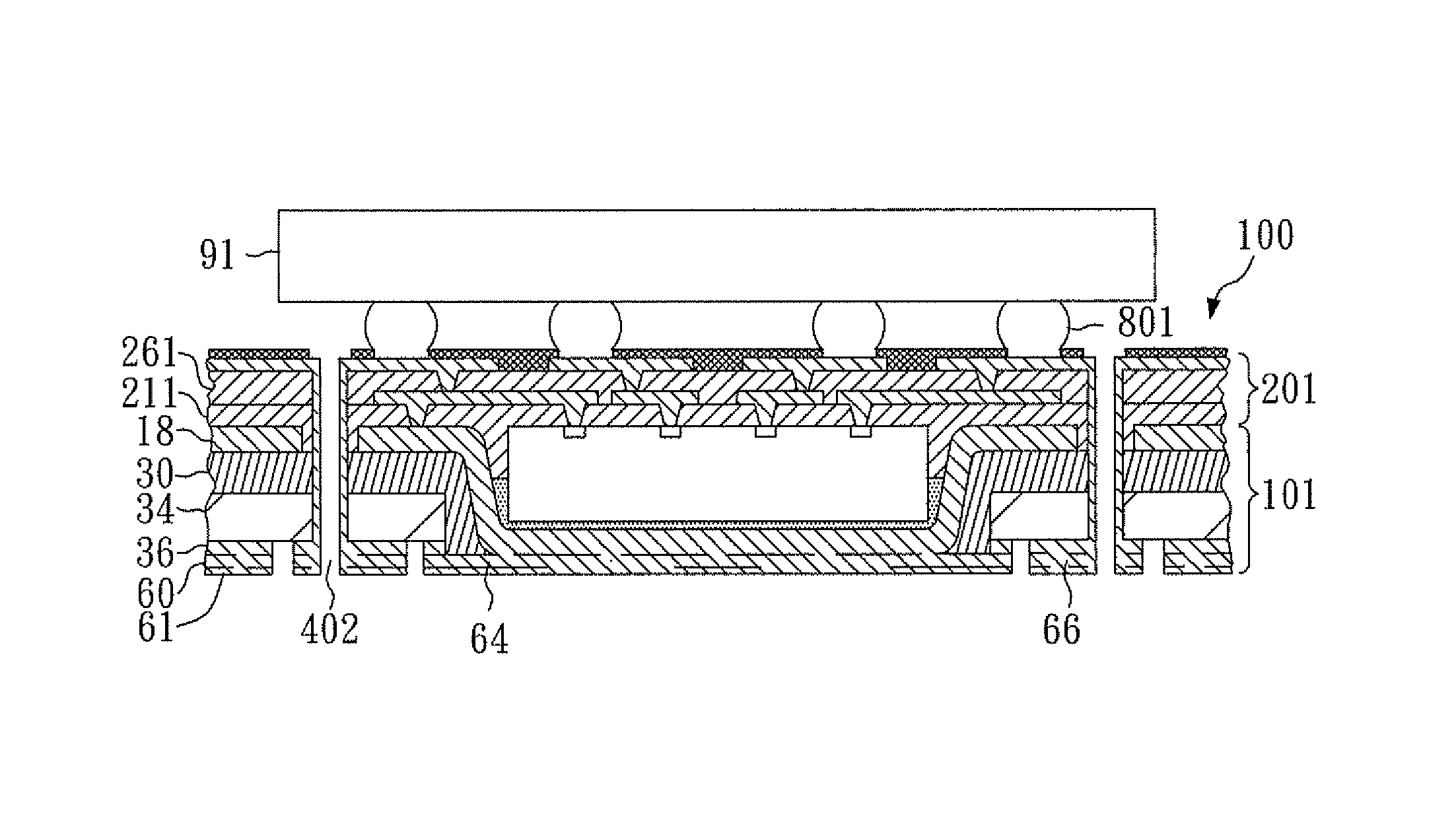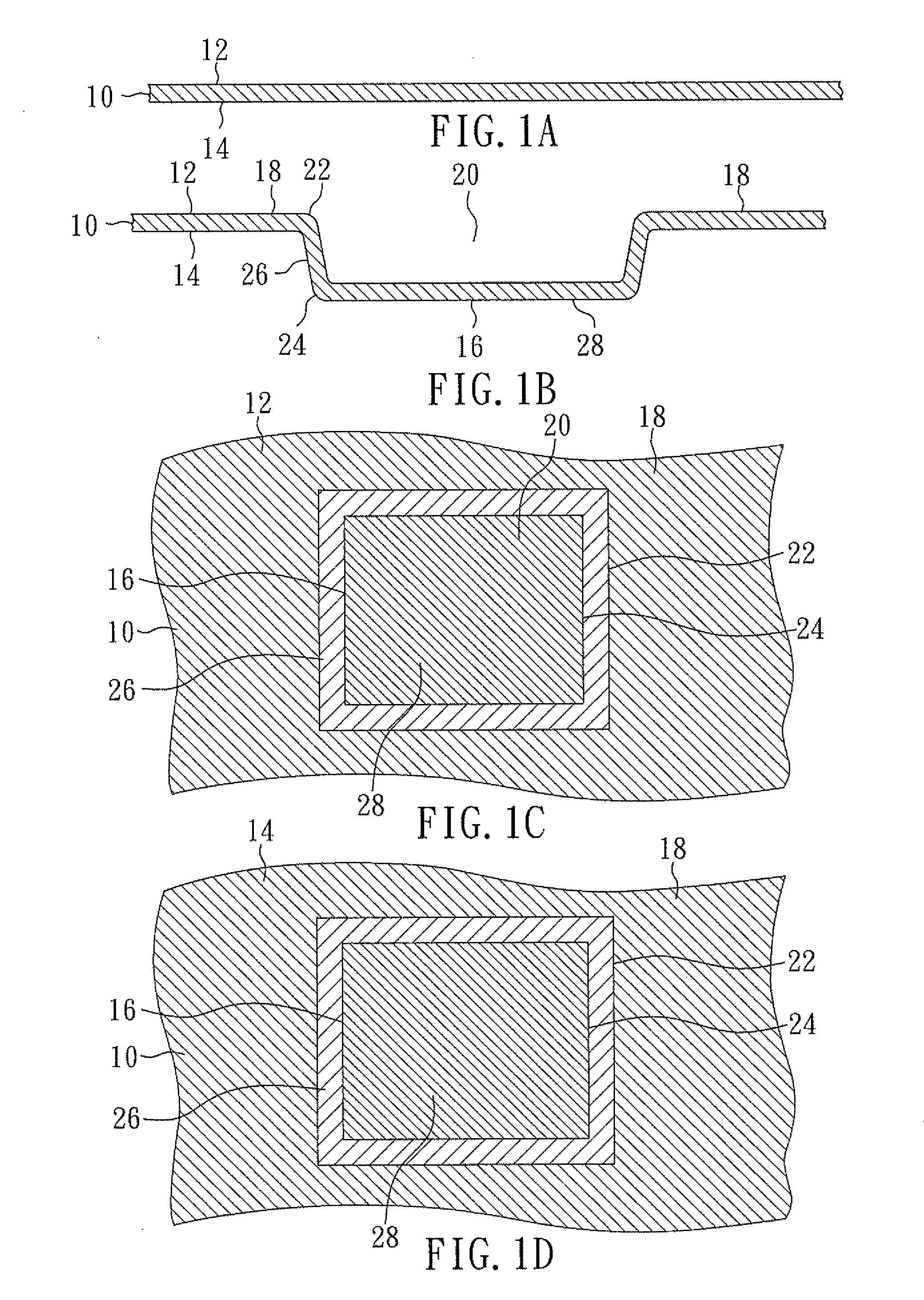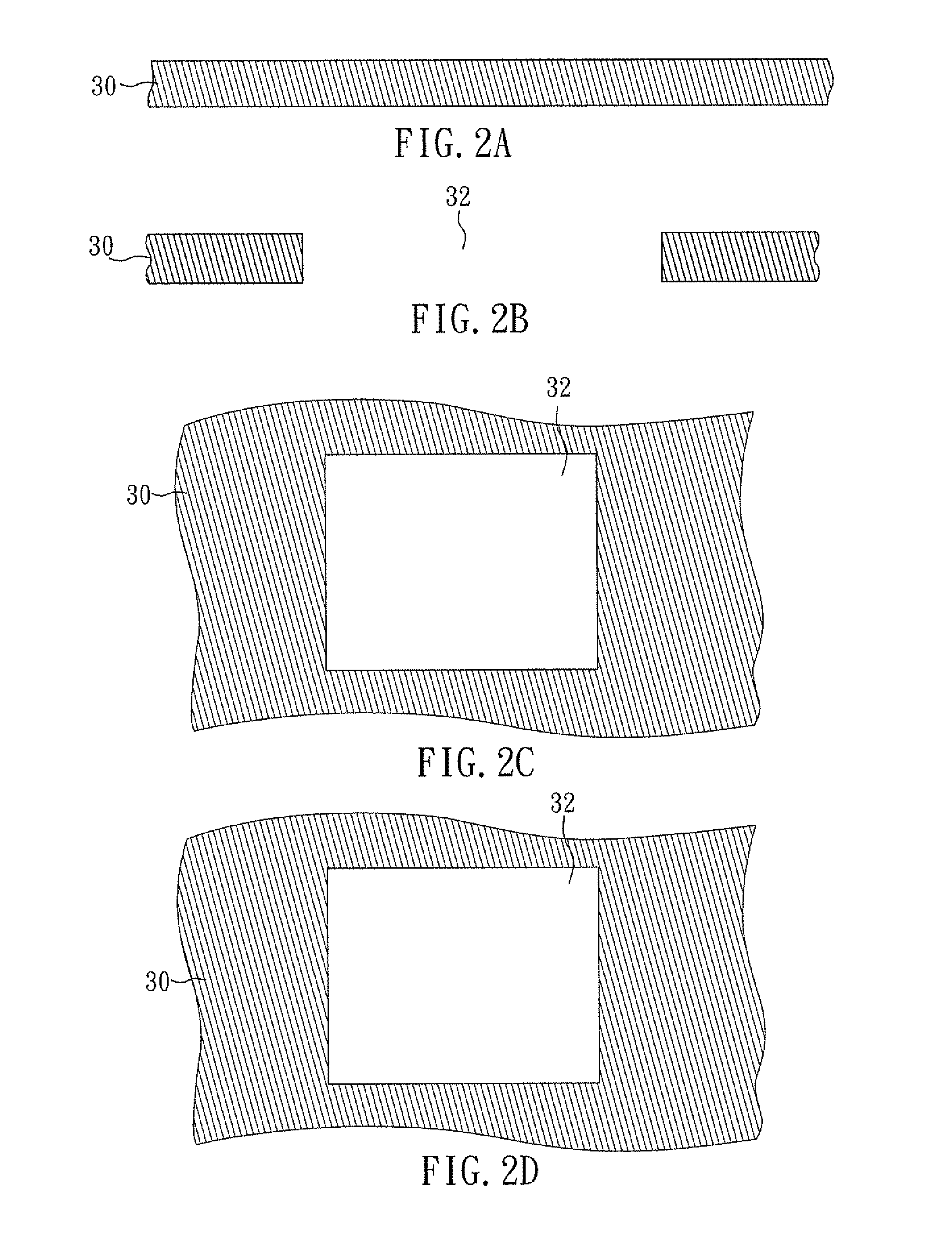Method of making stackable semiconductor assembly with bump/base/flange heat spreader and build-up circuitry
a technology of stackable semiconductors and heat spreaders, applied in semiconductor devices, semiconductor/solid-state device details, electrical devices, etc., can solve the problems of reducing chip features, many performance-related deficiencies, and multiple devices stacked in a limited space often encounter undesirable inter-device noise, and achieve excellent heat spreading and heat dissipation. , the effect of not prone to delamination
- Summary
- Abstract
- Description
- Claims
- Application Information
AI Technical Summary
Benefits of technology
Problems solved by technology
Method used
Image
Examples
embodiment 1
[0079]FIGS. 1A and 1B are cross-sectional views showing a method of making a bump and a flange in accordance with an embodiment of the present invention, and FIGS. 1C and 1D are top and bottom views, respectively, corresponding to FIG. 1B.
[0080]FIG. 1A is a cross-sectional view of metal plate 10 which includes opposing major surfaces 12 and 14. Metal plate 10 is illustrated as a copper plate with a thickness of 100 microns. Copper has high thermal conductivity, good flexibility and low cost. Metal plate 10 can be various metals such as copper, aluminum, alloy 42, iron, nickel, silver, gold, combinations thereof, and alloys thereof.
[0081]FIGS. 1B, 1C and 1D are cross-sectional, top and bottom views, respectively, of metal plate 10 with bump 16, flange 18 and cavity 20. Bump 16 and cavity 20 are formed by mechanically stamping metal plate 10. Thus, bump 16 is a stamped portion of metal plate 10 and flange 18 is an unstamped portion of metal plate 10.
[0082]Bump 16 is adjacent to and in...
embodiment 2
[0150]FIGS. 6A-6F are cross-sectional views showing a method of making a stackable semiconductor assembly with the plated through-hole connected to an inner conductive layer of the build-up circuitry according to another aspect of the present invention.
[0151]FIG. 6A is a cross-sectional view of thermal board 101 with first dielectric layer 211 thereon, which is manufactured by the steps shown in FIGS. 1A-5C.
[0152]FIG. 6B is a cross-sectional view of the structure with through-holes 401. Through-holes 401 correspond to openings 181 in flange 18 and extend through first dielectric layer 211, flange 18, adhesive 30, substrate 34 and conductive layer 36 in the vertical direction. Through-holes 401 are formed by mechanical drilling and can be formed by other techniques such as laser drilling and plasma etching.
[0153]FIG. 6C is a cross-sectional view of the structure showing first via openings 221 formed through first dielectric layer 211 to expose contact pads 114 and selected portions o...
embodiment 3
[0161]FIGS. 7A-7H are cross-sectional views showing a method of making a stackable semiconductor assembly with a plated through-hole connected to an inner pad of the thermal board according to yet another aspect of the present invention.
[0162]FIG. 7A is a cross-sectional view of thermal board 101, which is manufactured by the steps shown in FIGS. 1A-4E.
[0163]FIG. 7B is a cross-sectional view of the structure with through-holes 401. Through-holes 401 extend through flange 18, adhesive 30, substrate 34 and conductive layer 36 in the vertical direction. Through-holes 401 are formed by mechanical drilling and can be formed by other techniques such as laser drilling and plasma etching.
[0164]FIG. 7C is a cross-sectional view of the structure with first plated layer 60 outside through-hole 401 and connecting layer 62 and insulative filler 63 in through-hole 401. First plated layer 60 covers and extends from bump 16 and flange 18 in the upward direction. First plated layer 60 also covers an...
PUM
 Login to View More
Login to View More Abstract
Description
Claims
Application Information
 Login to View More
Login to View More - R&D
- Intellectual Property
- Life Sciences
- Materials
- Tech Scout
- Unparalleled Data Quality
- Higher Quality Content
- 60% Fewer Hallucinations
Browse by: Latest US Patents, China's latest patents, Technical Efficacy Thesaurus, Application Domain, Technology Topic, Popular Technical Reports.
© 2025 PatSnap. All rights reserved.Legal|Privacy policy|Modern Slavery Act Transparency Statement|Sitemap|About US| Contact US: help@patsnap.com



